
Now that’s a chunk of a block of a rock or something. Actually, it’s concrete, a manmade rock. But it’s “done broke” as they say…
It looks like a reptiles beak, below.
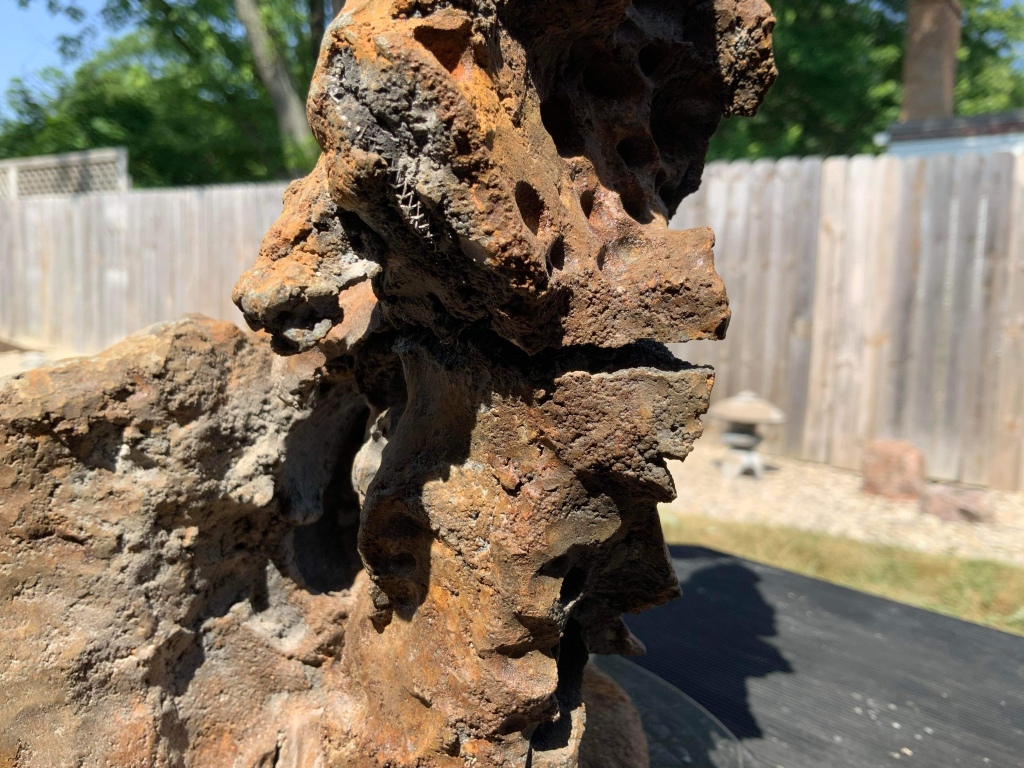
The story begins with a text, including some pics and videos, from Cincinnati.

The text was from Brendan. Say “Hi!” Brendan:
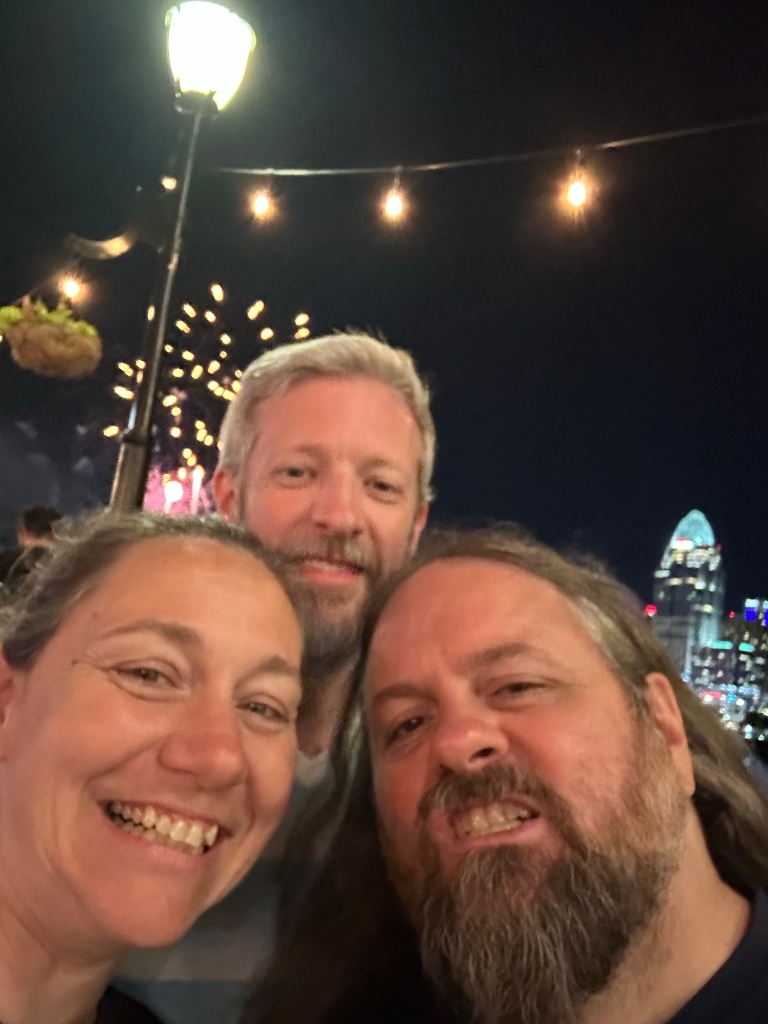
That’s him, my wife and me.
He got this “stone” from Poland, believe it or not. From a guy named Jacek Motyl. He makes rocks. Amazing rocks. Click on his name.

Anyway, Brendan ordered this stone and Jacek shipped it to him. In transit, it got “done broke”.

I’m not blaming the packing job. Jacek packed the rock well. I’m not blaming the Polish post office. Nor the USA postal service.
Let’s blame providence. The rock breaking gave me an opportunity to try something I’ve never done before. Sorry Brendan. Yes, this is my first attempt. I shall try my best sir.
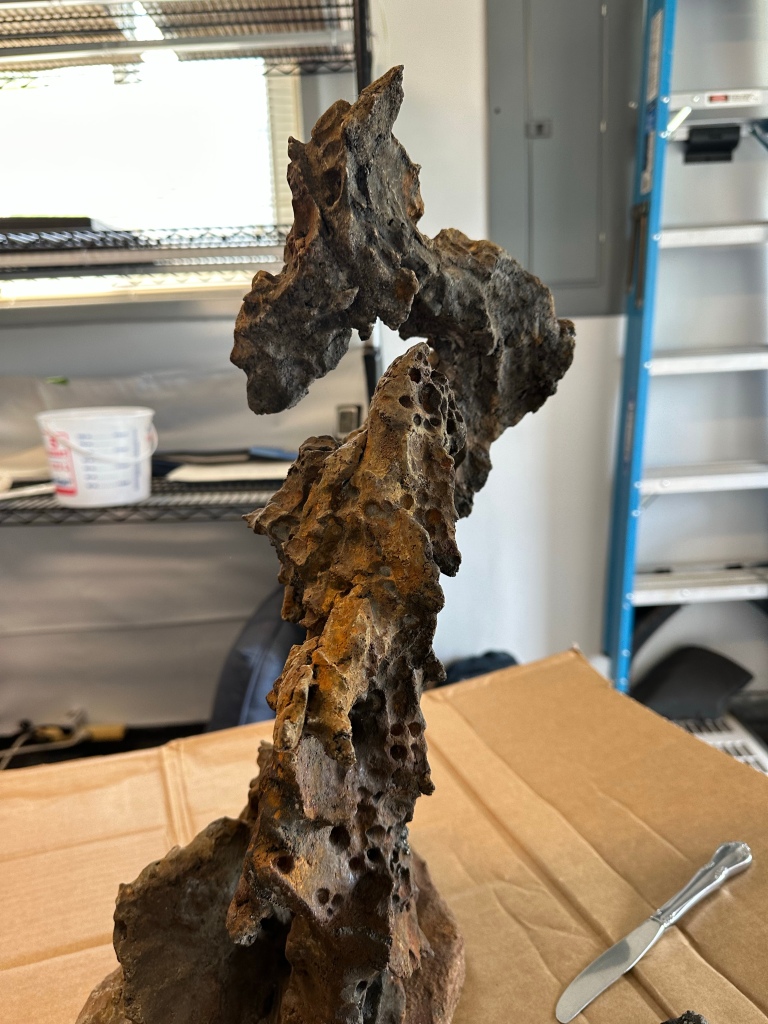
The type of rock is technically called “tateishi”, or standing stone, used in a root over rock style called, in many modern spellings, “ishisuki”. When I was growing up in bonsai, we spelled it “ishitsuki”. Yeah, ishitsuki, I shit you not….but the modern spelling helps us to pronounce it correctly. The “T” and the “S” make a singular sound in Japanese. Kinda like an “tssss” sound.
Anyway, that’s my joke about root over rock style. It’s better in person, with the hand gestures and all.
Watch the video below to see how bad the break is.
Not to give away secrets, but the shape was created by taking screen or hardware cloth and making the basic shape.

Then the screen is built up with cement. And colored, shaped, sculpted, aged, etc.
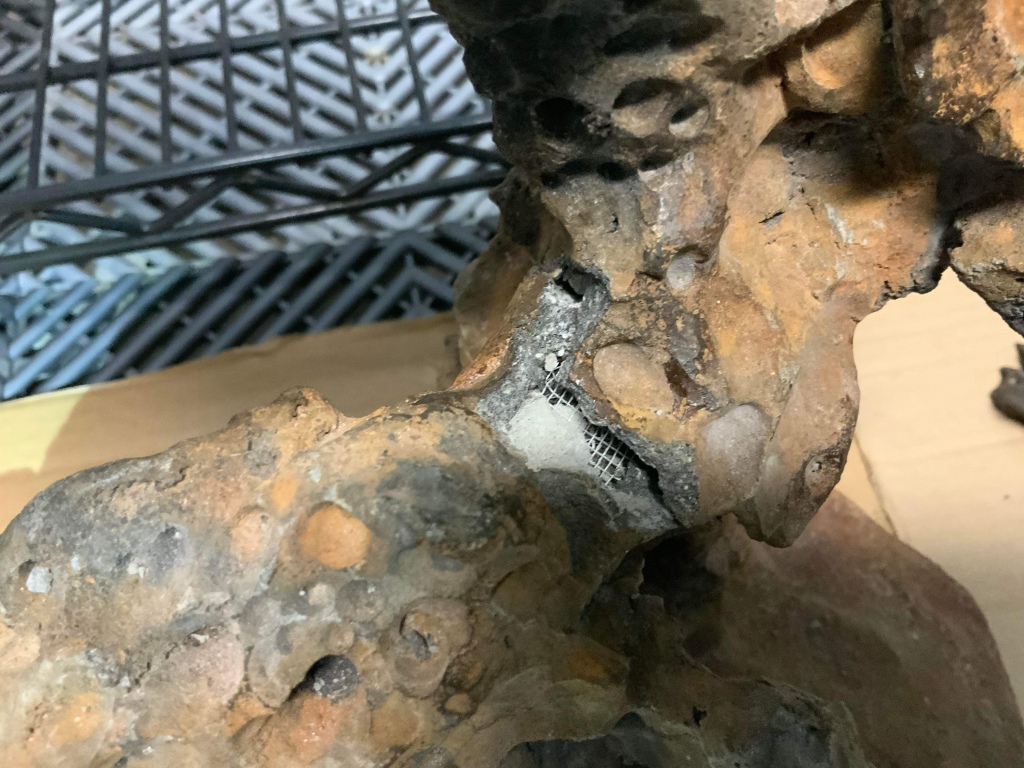
Pretty cool right?
My job is to fix the break and match the colors and texture. So I first had Brendan try to find Ciment Fondue. I had remembered reading about the stuff reading in the old books and magazines when I first started in bonsai (books and magazines are these amazing learning tools that one held in one’s hands, printed on paper. You would flip pages and read and the knowledge was amazing. I could tell you about encyclopedias but you’d zone out quickly).
Brendan couldn’t find Ciment fondue. Searching on google, I found it. What is it?
CIMENT FONDU® is a hydraulic binder with an alumina content of approximately 40%. Composed mainly of calcium aluminate.
It’s a brand name, only available in Europe, so I told him to find something similar. And he did.
Refractory mortar.
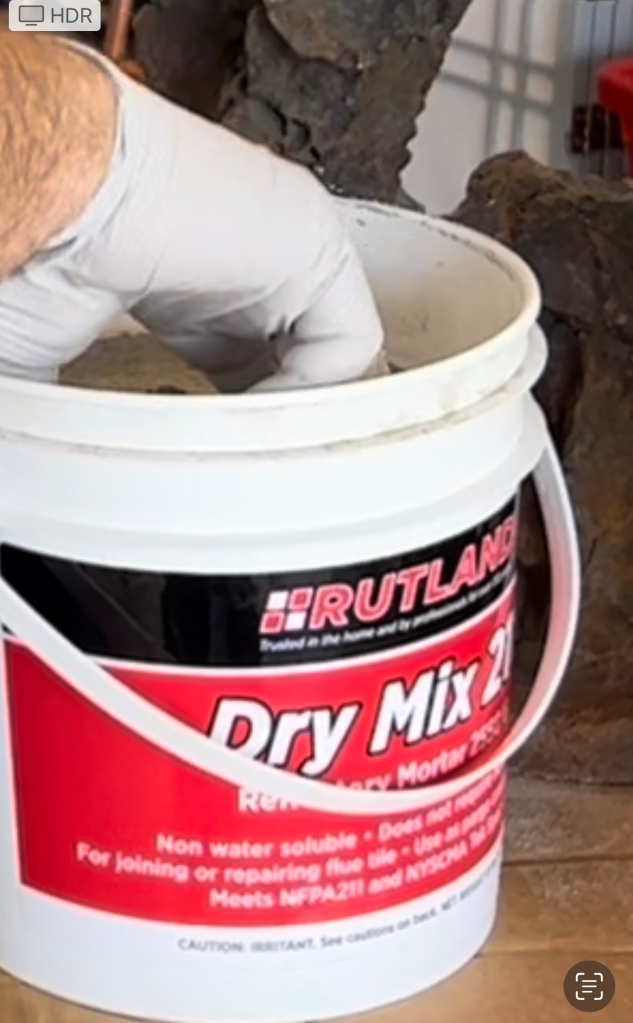
Why something similar? So it expands and contracts in similar ways to heat and cold cycles as the original sculpture. And refractory cement is waterproof. An important thing up north, as water freezes in the cold, and can explode our rock. That might sound spectacular. But that’s not conducive to stable bonsai plantings.
There’s something soothing playing with cement.
Measure out a portion….
Add color (we had red, tan, called buff, and black. I eyeballed it).
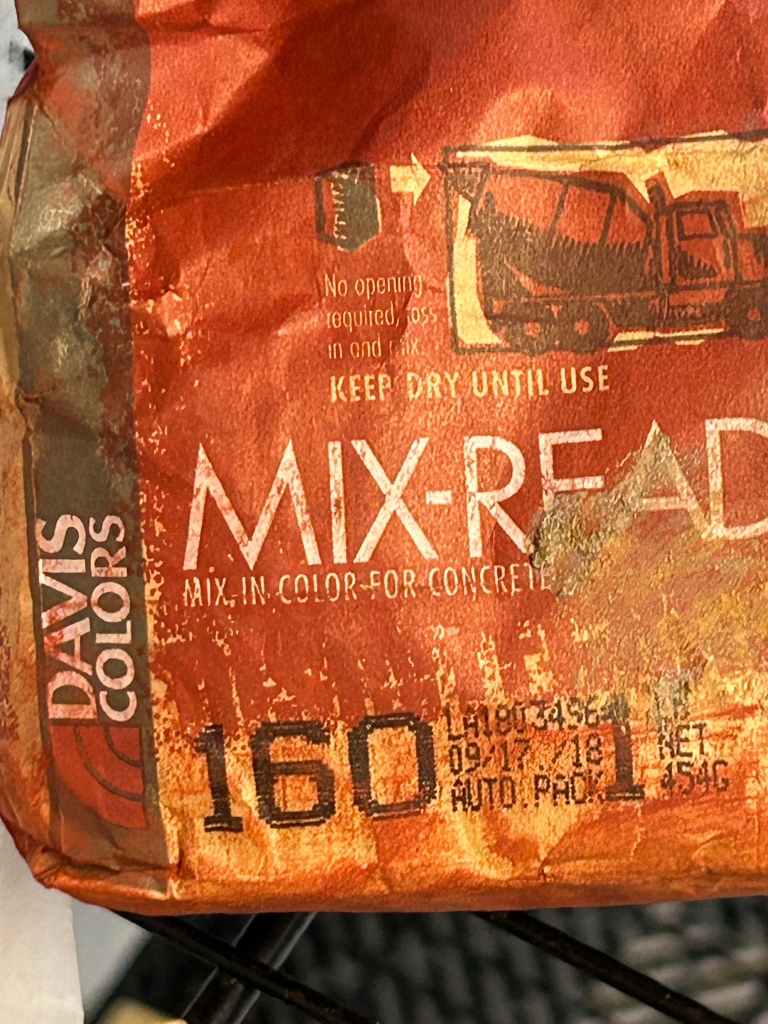
And a trick, don’t mix it fully. You want variations.

Add water.
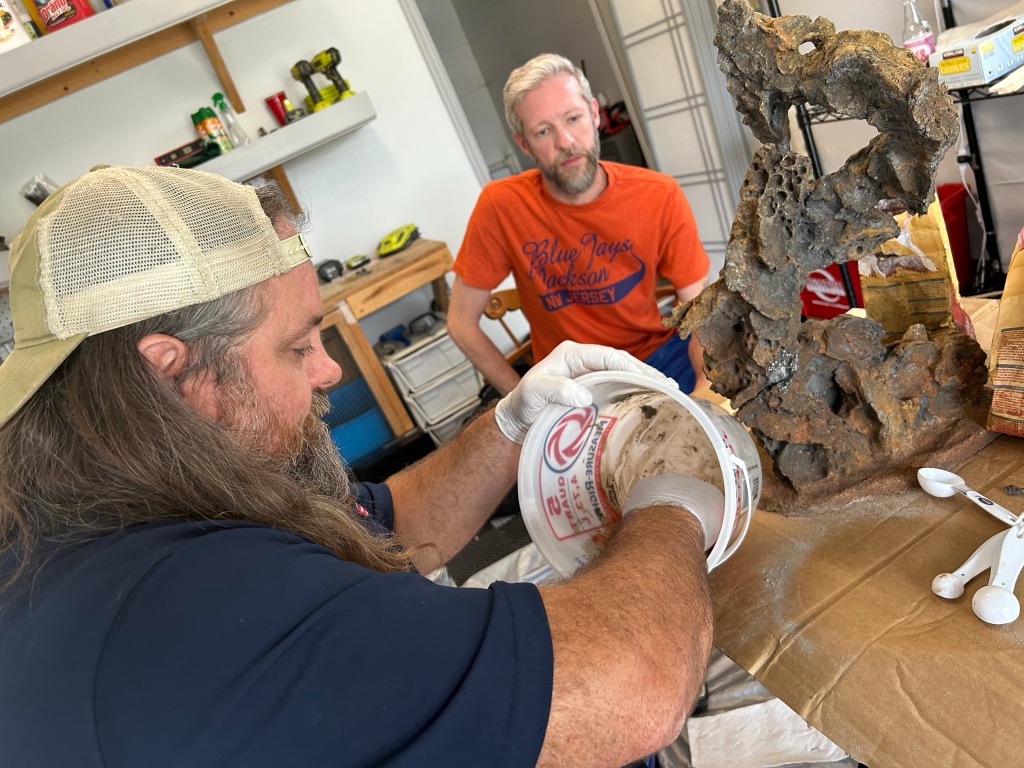
And move fast.

Brendan was watching me closely.
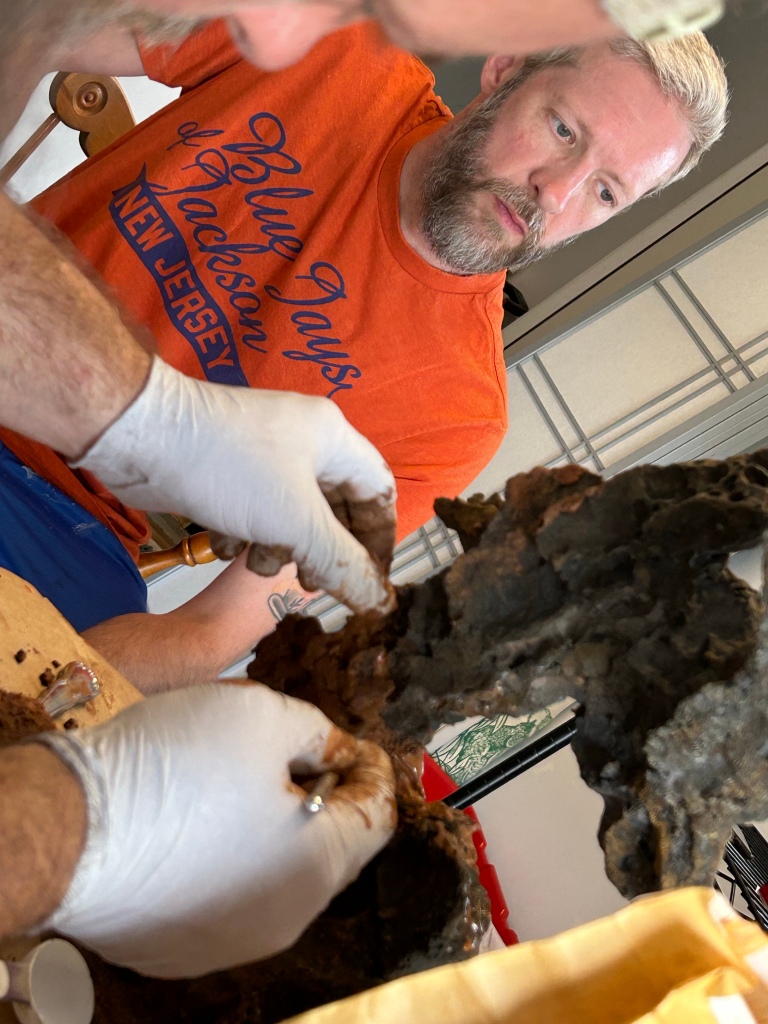
I smeared it, chopsticked it, blotted it. It’s a feeling thing.

I made sure to push the material into the cracks to ensure the repair of the rock, and not just make an aesthetic facade.
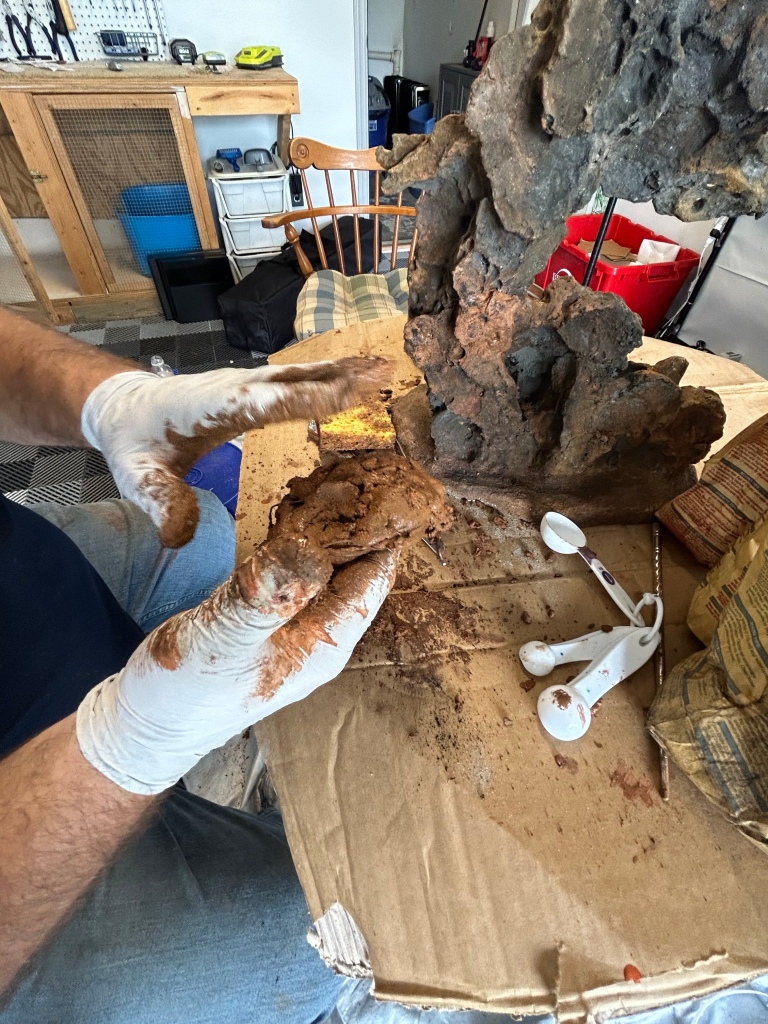
And with the leftover cement, I played around a little.
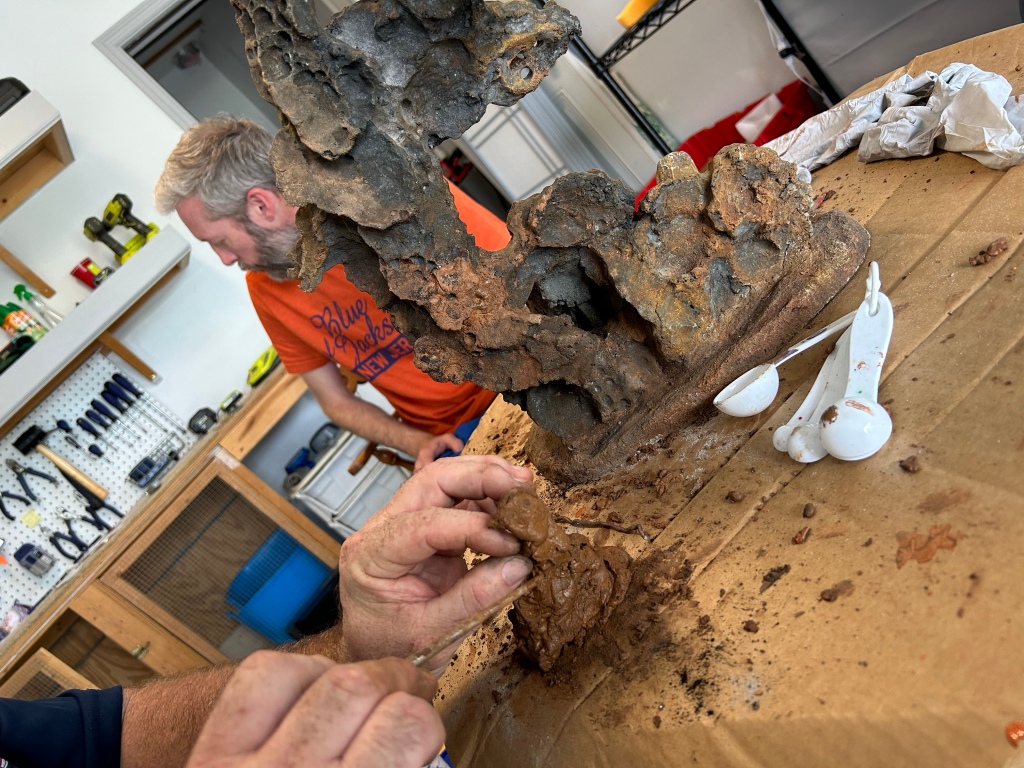
Yeah, I know what it looks like.

After the repair dried, I think it looks good.
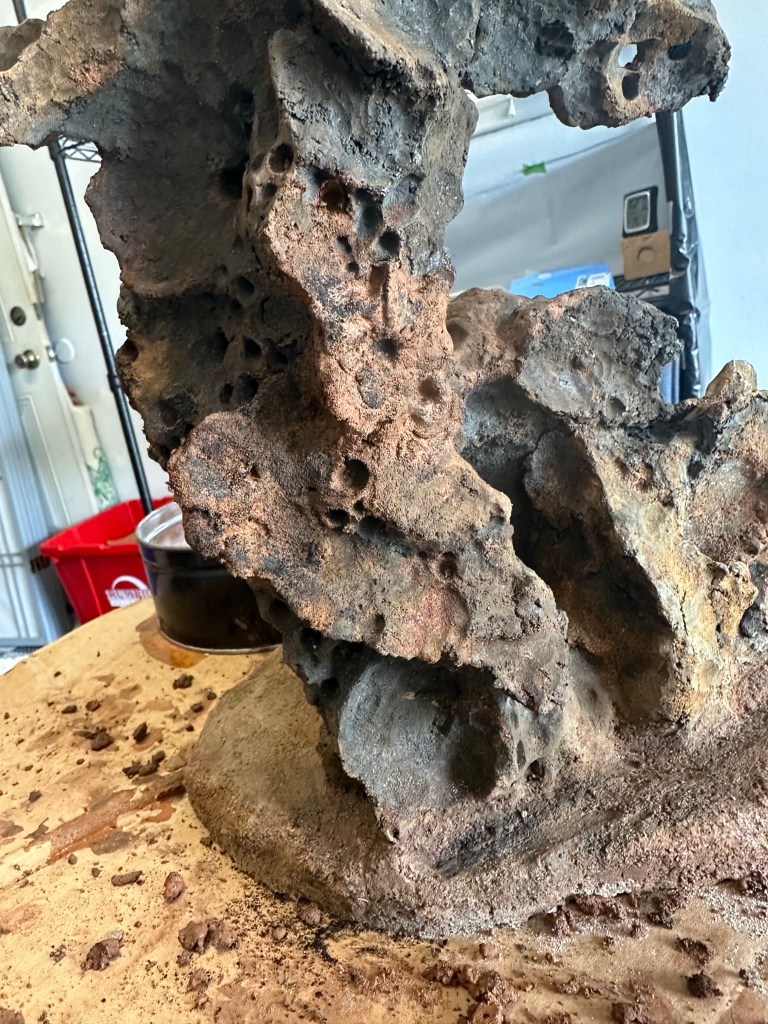
I matched the texture and color. But most importantly, it’s solid.
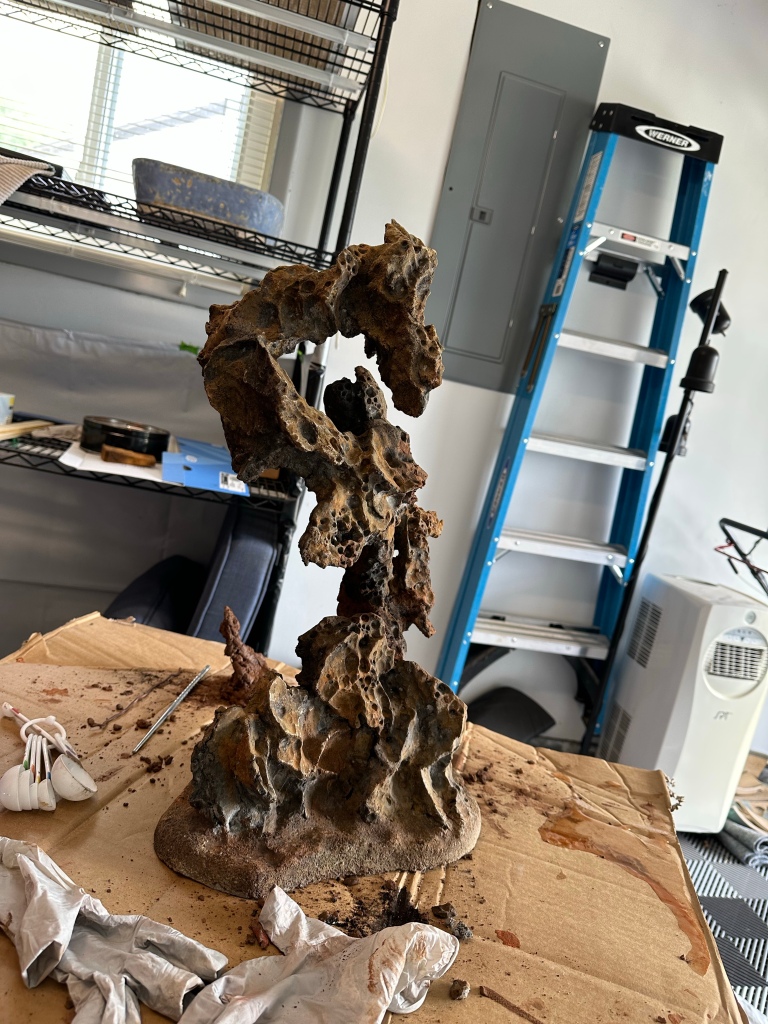
I wouldn’t drop it, but it’s one piece again.
Below, is where I cemented that chunk back into place:
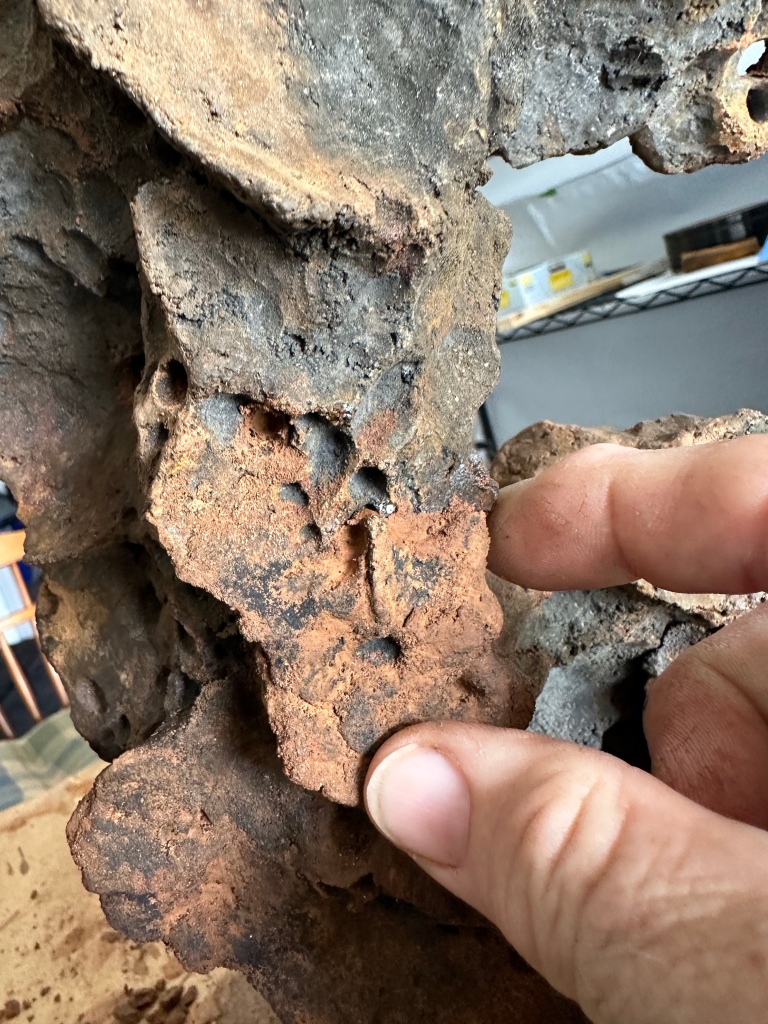
The “beak” is gone.
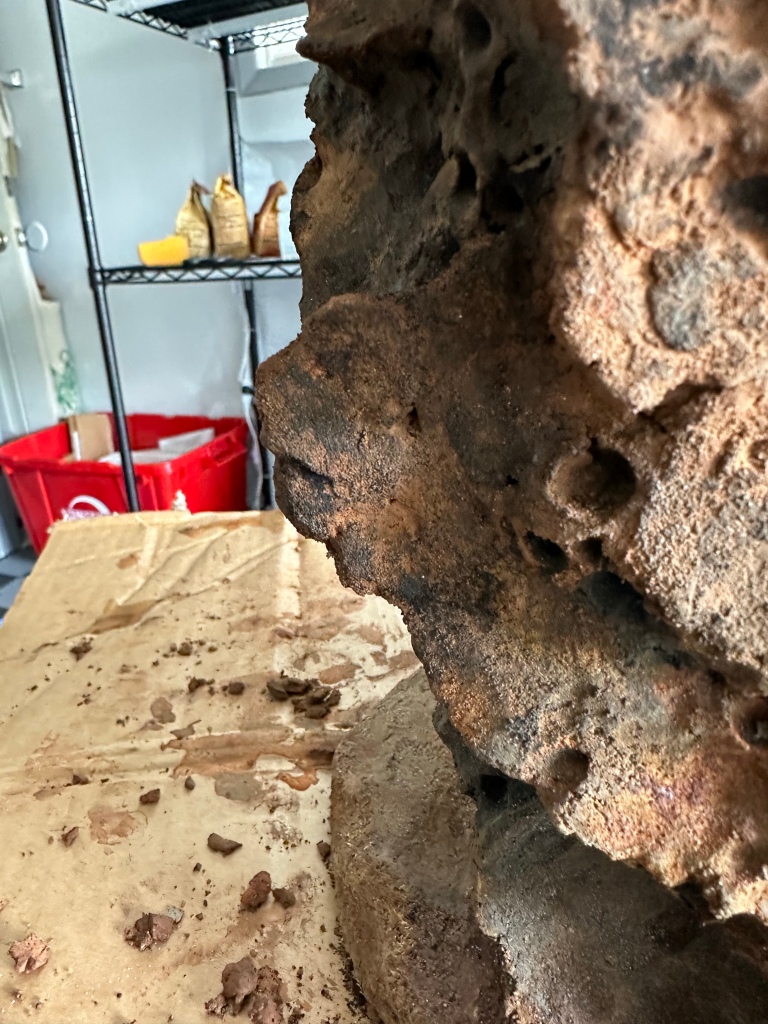
Now it’s up to Brendan what to do with it.
Concrete block “jr” (regardless of what it may resemble) seems like a perfect mini root-over-rock base candidate. Nice fix!
LikeLike